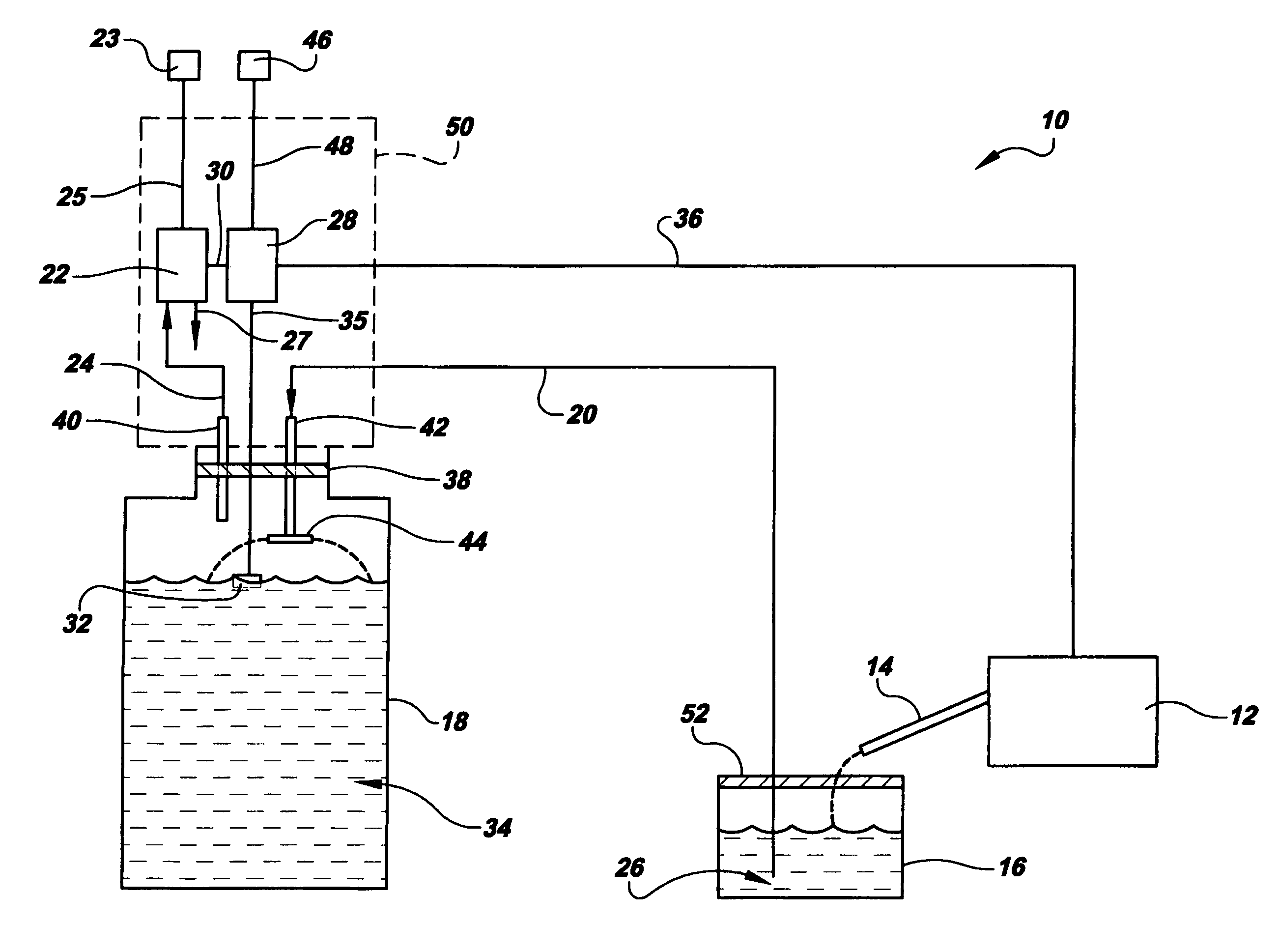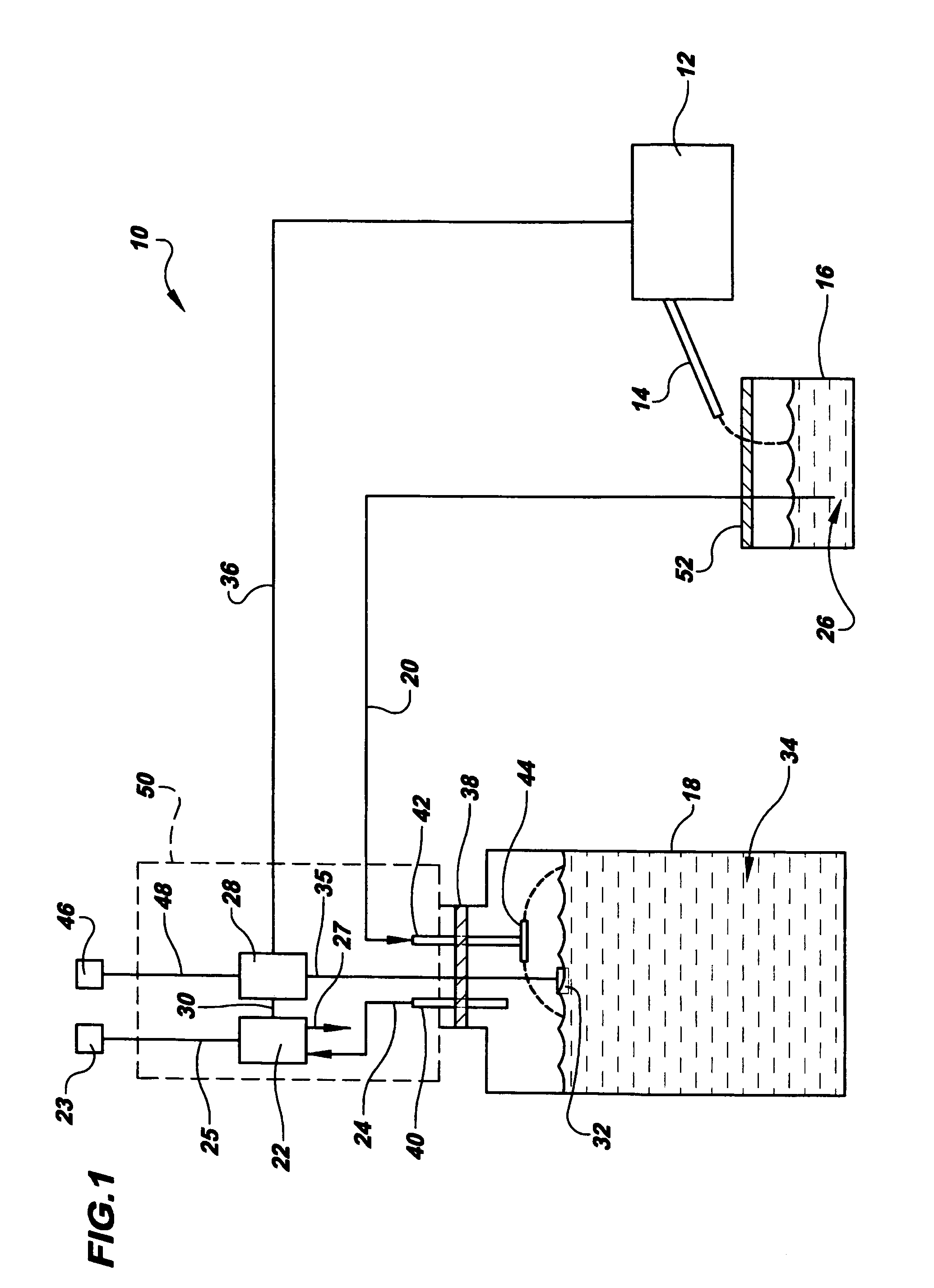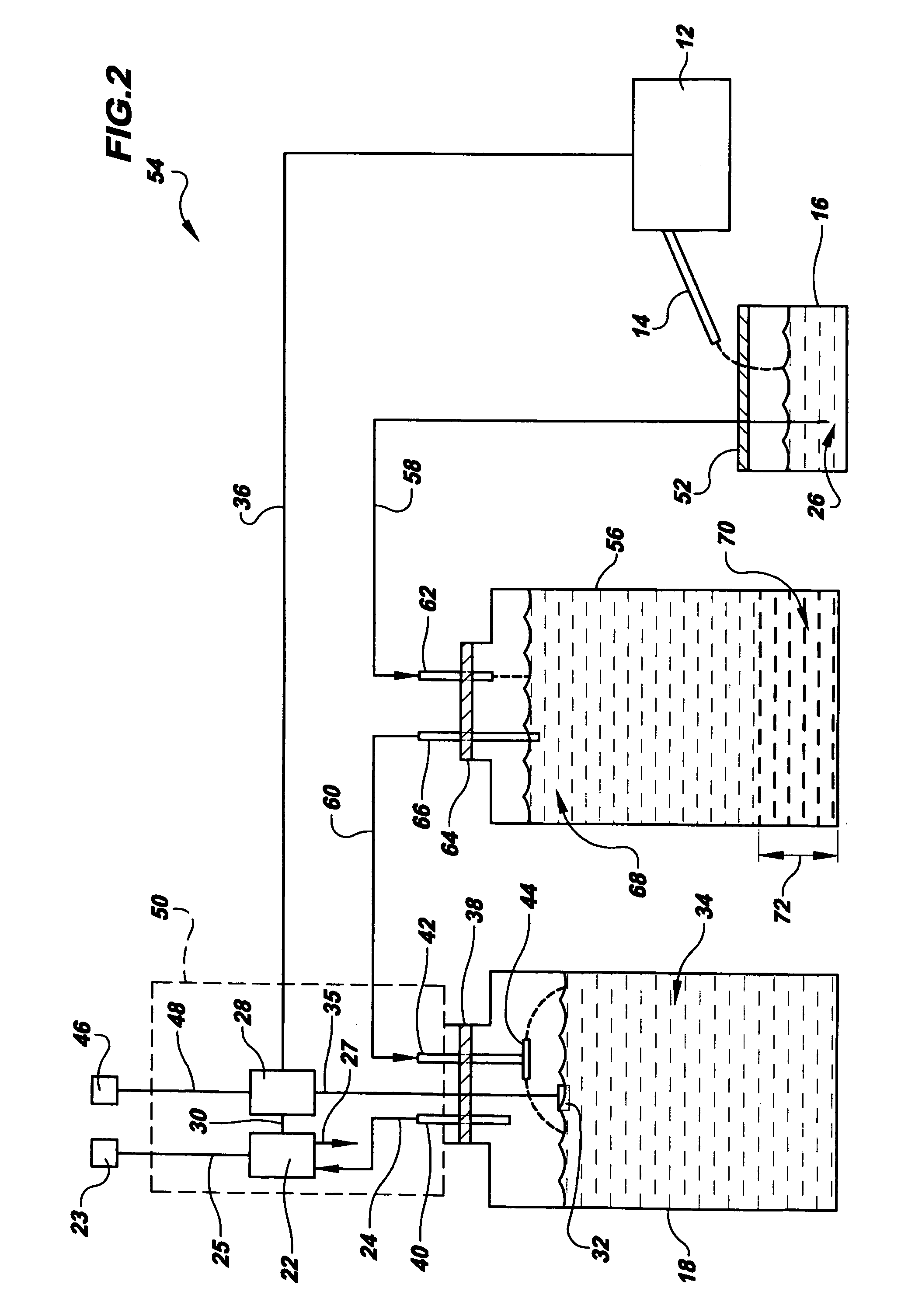Vacuum separation, transport and collection system for immiscible liquids
a vacuum system and immiscible liquid technology, applied in the direction of water cleaning, liquid displacement, separation processes, etc., can solve the problems of reducing the operational efficiency of the vacuum system, too long a resident time, and insufficient resident time of the suction particulate contaminants, so as to efficiently dispose of the collected immiscible liquid, minimize the possibility of solid particulates clogging the vacuum line, and achieve the effect of reducing the possibility of solid particulates clogging
- Summary
- Abstract
- Description
- Claims
- Application Information
AI Technical Summary
Benefits of technology
Problems solved by technology
Method used
Image
Examples
Embodiment Construction
[0019]Referring to the drawings in detail, a vacuum separation, transport and collection system for immiscible liquids is shown in FIG. 1, and is generally designated by the reference numeral 10. The vacuum system 10 includes a separator means 12 for separating two or more immiscible liquids. The separator means may be any known separator capable of separating immiscible liquids, such as a skimmer separator shown in the aforesaid U.S. Pat. No. 4,274,957 to Koller. An exemplary skimmer is available under the trademark RUSTLICK® Tramp Oil Skimmer, part number 78,012 from the ITW ROCOL NORTH AMERICA company, of Glenview, Ill. Additionally, a skimmer separator such as in the Koller Patent is available under the trademark OYBELT®, from the OYBELT®Corporation, of North Lake, Wis. The separator means 12 directs a separated immiscible liquid through a spout 14 into a holder 16, that is secured in fluid communication with the separator means 12. The vacuum system 10 also includes a collector...
PUM
| Property | Measurement | Unit |
|---|---|---|
| length | aaaaa | aaaaa |
| voltage | aaaaa | aaaaa |
| vacuum | aaaaa | aaaaa |
Abstract
Description
Claims
Application Information
 Login to View More
Login to View More - R&D
- Intellectual Property
- Life Sciences
- Materials
- Tech Scout
- Unparalleled Data Quality
- Higher Quality Content
- 60% Fewer Hallucinations
Browse by: Latest US Patents, China's latest patents, Technical Efficacy Thesaurus, Application Domain, Technology Topic, Popular Technical Reports.
© 2025 PatSnap. All rights reserved.Legal|Privacy policy|Modern Slavery Act Transparency Statement|Sitemap|About US| Contact US: help@patsnap.com



